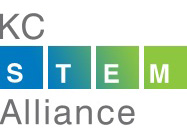15 Jul Education in the new economy: STEM plus arts
The United States has long been a leader in innovation. In order to preserve this competitive edge, we must invest in our most important resource — our children. It is imperative that we provide our children with new ways of learning and opportunities to acquire the skills that will ensure their future success.
Our K-12 education system was designed to meet the needs of the Industrial Revolution. Schools were designed like assembly lines that emphasized conformity, linearity and standardization. We know that the challenges facing the next generation will require different skills and different ways of thinking than this model provides.
There is little debate that STEM (science, technology, engineering and math) education is critical for our students. However, we should also expect that success in our global economy will depend upon our future workers’ abilities to be inventive, creative and resourceful.
In a 2010 survey conducted by IBM, 1,500 CEOs named creativity as the No. 1 characteristic necessary to be successful in today’s complex business environment. According to a 2013 study by Michigan State University, adults who own a patent or a business received up to eight times more exposure to the arts as children than the general public. But, if we view patents as an indicator of innovation, there is cause for concern. In 2009, for the first time, more than half of U.S. patents were awarded to non-U.S. companies. To close this gap, today’s students must solve increasingly multifaceted problems that will require more than STEM proficiency.
Ken Robinson, author of the inspiring best-seller “Out of Our Minds: Learning to be Creative,” reminds us that the goal of education should not be to teach subjects, rather to teach students. We must provide our youth with a stimulating, integrated, relevant curriculum and learning environment that nurtures their innate curiosity.
Boeing and COCA are focused on ensuring that all students have these 21st century skills. We recognize the need for schools to incorporate more arts education into the classroom on a consistent basis. Through support for programs like COCA’s Interchange program, Boeing helps teachers deliver the kind of education that goes beyond content and data, and into project-based learning where critical thinking, collaboration, invention and creativity are encouraged.
The Boeing-COCA partnership provides professional development to teachers and hands-on learning for students in elementary schools in the St. Louis, University City and Ferguson-Florissant districts. The arts integration program teaches students how to infer, interpret and describe information by thoughtfully observing paintings and listening to music. Then, these skills are used to understand and interpret historic scientific achievements.
Finally, these same skills are applied to present-day explorations as students make observations about the sky at the Challenger Learning Center and work with Boeing engineers on a creative design project using a “MaKey MaKey,” an invention kit that turns everyday objects into touch pads by connecting them to the Internet. The goal is to have students begin to draw a parallel between the seemingly different “languages” of art and science, understanding that both approaches can promote problem solving, innovation and collaboration.
For a high-tech employer like Boeing, which has a largely U.S. workforce and an increasingly global footprint, educating students to think innovatively is critical. Both COCA and Boeing are committed to creating a future where all students have access to the tools needed to develop their skills, do what they dream, and build something better for our communities and for our future. We are at a critical time and have a tremendous opportunity to renew our commitment to arts education within our schools, to further align with the economy and our future.
Jim O’Neill is president of global services and support and St. Louis senior executive at Boeing Co. Kelly Pollock is executive director of COCA (Center of Creative Arts) in University City.
Source: St. Louis Post-Dispatch



